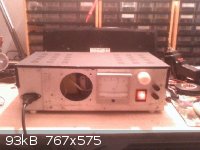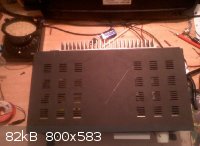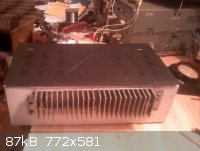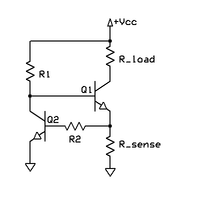Mildronate
Hazard to Others
  
Posts: 428
Registered: 12-9-2009
Member Is Offline
Mood: Ruido sintetico
|
|
Laboratory power supply constant current
I had made laboratory power supply 270w 25V with 270w transformer (recoiled), 50A diode bridge, lm317 and 3 pararell TIP35C transistors, Anbody can
sugest good and easy way to make constant current regulator for this project? Here is bad qulity pictures  schematic i will post later. schematic i will post later.
  
|
|
|
WChase501
Harmless

Posts: 16
Registered: 23-1-2014
Location: Hot Springs Arkansas
Member Is Offline
Mood: Depressed and Happy
|
|
Pulse width modulator on the line side, used to control output current.
|
|
|
Metacelsus
International Hazard
    
Posts: 2531
Registered: 26-12-2012
Location: Boston, MA
Member Is Offline
Mood: Double, double, toil and trouble
|
|
If you don't mind dumping power as waste heat, you could do something simpler, like:

|
|
|
Texium
|
Thread Moved
21-11-2023 at 14:16 |
semiconductive
Hazard to Others
  
Posts: 287
Registered: 12-2-2017
Location: Scappoose Oregon, USA.
Member Is Offline
Mood: Explorative
|
|
How constant of a current do you want?
A light bulb filament happens to be a decent current regulator in many simple situations. The cooler the bulb gets, the lower the resistance, and the
more current tries to flow.
WChase501's idea isn't bad, either. Depending on what you want, a small microcontroller (PIC16F505), + a few power transistors and opto-isolators,
and you can easily regulate current. You can also use scrap PC power supplies that have the line side rectifiers, inrush protectors, capacitors, and
transistors so you don't have to design most of it, yourself.
|
|
|
woelen
Super Administrator
        
Posts: 7977
Registered: 20-8-2005
Location: Netherlands
Member Is Offline
Mood: interested
|
|
You could use current-based LED drivers. They are very efficient and allow the resistance of the load to vary over a wide range. Some models allow
voltage to swing from 0 volts (shortcircuit at output) to as high as 80 volts. You can combine them by placing them in parallel, allowing higher
currents.
|
|
|
Texium
Administrator
       
Posts: 4516
Registered: 11-1-2014
Location: Salt Lake City
Member Is Offline
Mood: PhD candidate!
|
|
Sorry y’all, not sure if you noticed that you’re replying to a nearly 10-year-dead thread. I’m still in the process of moving threads to the new
subfora, so old ones are floating near the top.
|
|
|